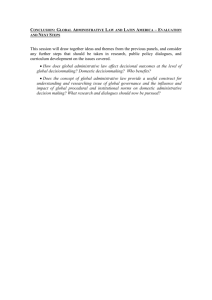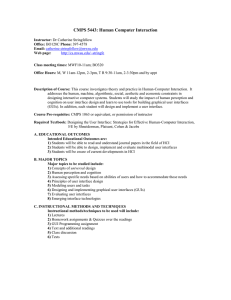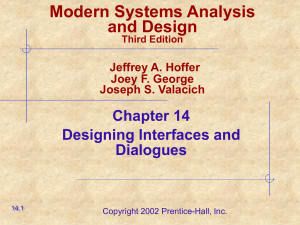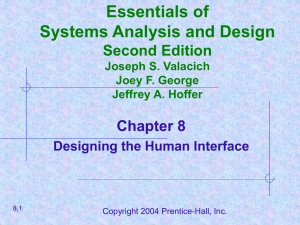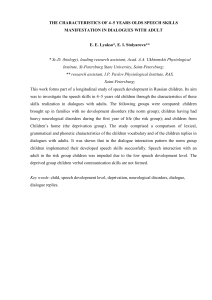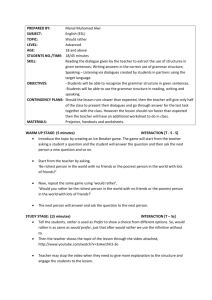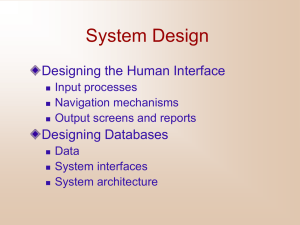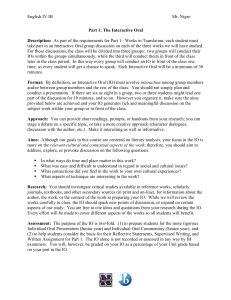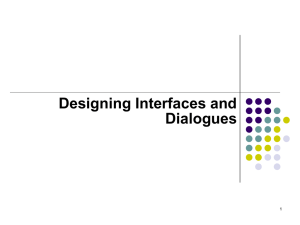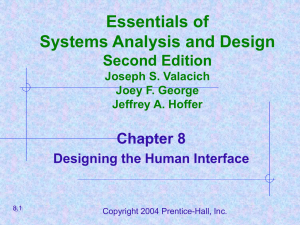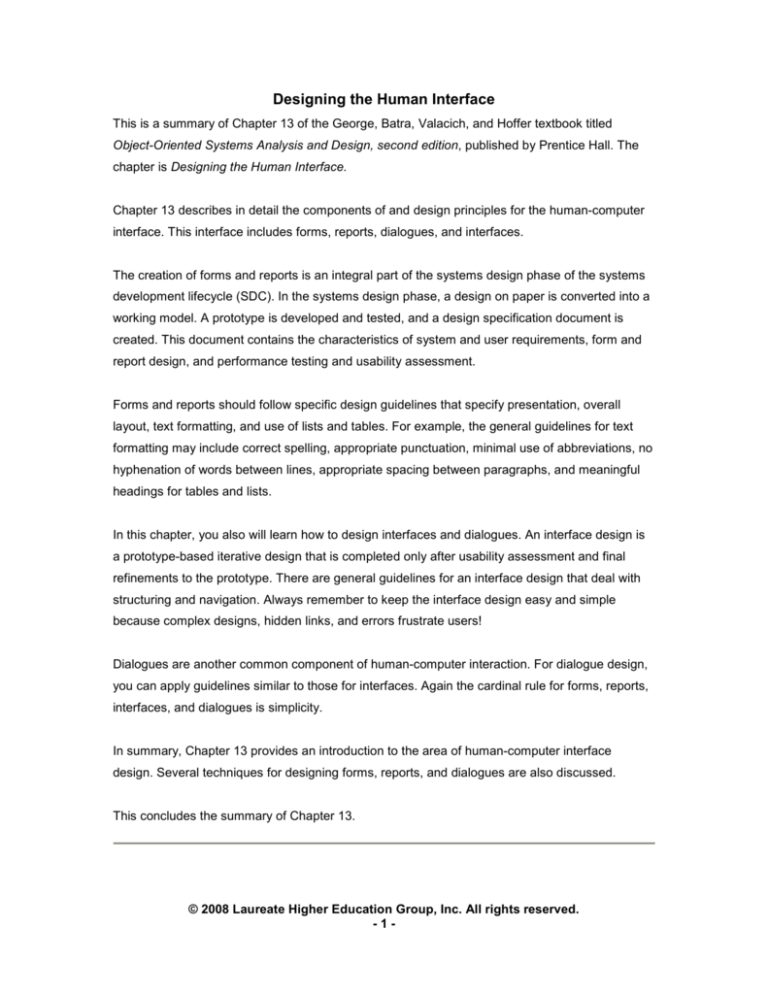
Designing the Human Interface
This is a summary of Chapter 13 of the George, Batra, Valacich, and Hoffer textbook titled
Object-Oriented Systems Analysis and Design, second edition, published by Prentice Hall. The
chapter is Designing the Human Interface.
Chapter 13 describes in detail the components of and design principles for the human-computer
interface. This interface includes forms, reports, dialogues, and interfaces.
The creation of forms and reports is an integral part of the systems design phase of the systems
development lifecycle (SDC). In the systems design phase, a design on paper is converted into a
working model. A prototype is developed and tested, and a design specification document is
created. This document contains the characteristics of system and user requirements, form and
report design, and performance testing and usability assessment.
Forms and reports should follow specific design guidelines that specify presentation, overall
layout, text formatting, and use of lists and tables. For example, the general guidelines for text
formatting may include correct spelling, appropriate punctuation, minimal use of abbreviations, no
hyphenation of words between lines, appropriate spacing between paragraphs, and meaningful
headings for tables and lists.
In this chapter, you also will learn how to design interfaces and dialogues. An interface design is
a prototype-based iterative design that is completed only after usability assessment and final
refinements to the prototype. There are general guidelines for an interface design that deal with
structuring and navigation. Always remember to keep the interface design easy and simple
because complex designs, hidden links, and errors frustrate users!
Dialogues are another common component of human-computer interaction. For dialogue design,
you can apply guidelines similar to those for interfaces. Again the cardinal rule for forms, reports,
interfaces, and dialogues is simplicity.
In summary, Chapter 13 provides an introduction to the area of human-computer interface
design. Several techniques for designing forms, reports, and dialogues are also discussed.
This concludes the summary of Chapter 13.
© 2008 Laureate Higher Education Group, Inc. All rights reserved.
-1-


